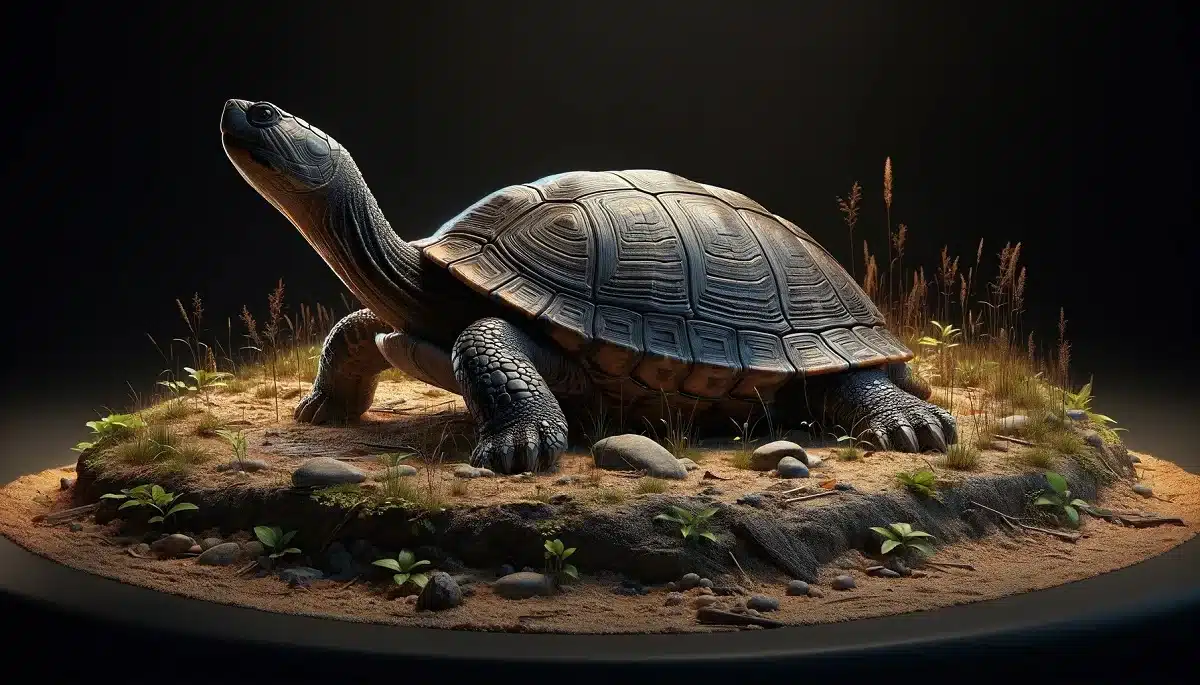Turtles and tortoises’ shells are, literally, a part of their skeletons; their external shells are fused to their ribs and spines, making it impossible to separate them from their bodies. Imagining a turtle or tortoise without its shell is nearly impossible. Upon closer examination, the shape of their shells and the beautiful patterns on them highlight these creatures’ unique biological and aesthetic features.
Their shells provide not only physical protection but also function as their “homes.” So, can these animals live without their shells? Absolutely not. Their shells protect their vital organs, support their body structure, and play a critical role in many aspects of life. Without their shells, turtles and tortoises would be unable to perform essential life functions, making their shells indispensable for their survival.

Tortoise Shell, A Suit of Armor
For turtles and tortoises, their shells are an essential element that fully meets their protection needs. Their survival is completely dependent on these shells. Land-dwelling turtles have a hard, highly arched shell that protects them from both weather and potential predators. In contrast, marine turtles have smooth, streamlined shells that increase their swimming efficiency.
Scientific research reveals that turtles initially developed their shells not to protect their vulnerable bodies, but to dig more efficiently. This evolutionary adaptation enabled them to use their front legs to dig into the sand .
Researchers also noted that turtle ancestors survived the mass extinction during the Permian/Triassic period by transitioning from terrestrial environments to marine environments . This process of adaptation provides a classic example of exaptation of a trait that initially evolved to serve one function, but over time comes to serve a completely different function . Expanded ribs, which originally aided the digging function, have now become important armor that protects turtles from predators.
Anatomy of a Turtle Shell
Most people think of the shell as just the dome they see on a turtle’s back, but the shell actually consists of two main parts and more than 50 dermal bones , making it more complex than other vertebrate species.
The upper part of the shell , the carapace , contains the ribs and back bones, while the lower part, called the plastron , protects the turtle’s abdominal area and contains the fused bones equivalent to the collarbone. These two sections of the shell are joined by a bony hinge that gives the turtle the flexibility to retract into its shell and exit it completely.
The shells of turtles and tortoises are part of their skeletons ; Their exoskeletons are integrated into their ribs and spine, so it is impossible to separate them from their bodies. Each turtle’s shell is unique to that individual and fits perfectly!
In addition to their sturdy, bony structure, turtles also have a keratin-based exterior, which gives them their unique shell patterns and provides extra protection. Leatherback sea turtles have flexible and durable cartilaginous skin rather than scales, which explains their name.
How Do Tortoises and Tortoises Grow Their Shells?
Tortoises and tortoises are born with their shells on, and as their bodies grow, their shells grow proportionally. Although baby turtles’ shells are softer than those of adults , they provide them with much-needed protection. Over time, the shells grow and harden in layers , thus gaining a larger and stronger structure.
The outer layers of the shell contain nerve endings , which means the shell has a similar feel to the skin of turtles and tortoises. Turtles, unlike other reptiles such as snakes, frogs, and lobsters , do not shed and regrow their outer layers; Their shells have the same growth rate as their skeletal system . However, turtles can sometimes shed old shell layers, a process that helps their shells grow and develop healthily.

Will a turtle be harmed if its shell is damaged?
When a turtle’s shell is broken, it feels excruciating pain ; This situation can be compared to the pain a person feels when he breaks his knee. Holes in the shell caused by calcium deficiency and lack of sunlight (vitamin D deficiency) negatively affect the normal growth of the turtle and make it more susceptible to various diseases. Because the shell is living tissue, damage to it can leave the turtle vulnerable to bacterial, fungal or viral infections , which can compromise the animal’s overall health.
Conclusion
Turtles and tortoises have been able to survive for millions of years thanks to their shells. These shells have given them resilience and intelligence throughout evolution , making them one of the oldest animal species on Earth. If it weren’t for their shells, these achievements wouldn’t be possible.
So, when you see a turtle or tortoise, respect it and leave it alone . Their bodies are integrated with their shells, and this protected structure forms the basis of their survival. When turtles withdraw and hide, it is not possible to intervene in their shells without causing physical harm to them.